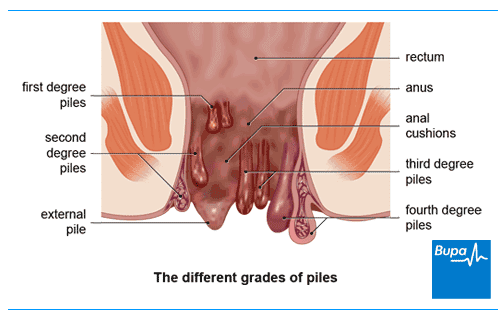The Big Picture- RSTV, UPSC Articles
Haemorrhoids/Piles – Ayushman Bhav – RSTV IAS UPSC
Archives
What is ‘piles’?
Piles is another term for haemorrhoids. Haemorrhoids are collections of inflamed tissue in the anal canal. They contain blood vessels, support tissue, muscle, and elastic fibers.
- The size of piles can vary, and they are found inside or outside the anus.
- Piles occur due to chronic constipation, chronic diarrhea, lifting heavy weights, pregnancy, or straining when passing a stool.
- Hemorrhoids are graded on a scale from I to IV. At grades III or IV, surgery may be necessary.
An individual with piles may experience the following symptoms:
- A hard, possibly painful lump may be felt around the anus. It may contain coagulated blood. Piles that contain blood are called thrombosed external haemorrhoids.
- After passing a stool, a person with piles may experience the feeling that the bowels are still full.
- Bright red blood is visible after a bowel movement.
- The area around the anus is itchy, red, and sore.
- Pain occurs during the passing of a stool.
Piles can escalate into a more severe condition. This can include:
- Excessive anal bleeding, also possibly leading to anaemia
- Infection
- Faecal incontinence, or an inability to control bowel movements
- Anal fistula, in which a new channel is created between the surface of the skin near the anus and the inside of the anus
- A strangulated haemorrhoid, in which the blood supply to the haemorrhoid is cut off, causing complications including infection or a blood clot
Classification:
- Grade I: There are small inflammations, usually inside the lining of the anus. They are not visible.
- Grade II: Grade II piles are larger than grade I piles, but also remain inside the anus. They may get pushed out during the passing of stool, but they will return unaided.
- Grade III: These are also known as prolapsed hemorrhoids, and appear outside the anus. The individual may feel them hanging from the rectum, but they can be easily re-inserted.
- Grade IV: These cannot be pushed back in and need treatment. They are large and remain outside of the anus.

Haemorrhoids/Piles – Ayushman Bhav – RSTV IAS UPSC
Source: Click here
Causes
Bawaseer-e- aamiya (Non Bleeding Piles/ Non Bleeding Haemorrhoids) are caused by increased pressure in the lower rectum. The blood vessels around the anus and in the rectum will stretch under pressure and may swell or bulge, forming piles.
- Sitting for long periods of time, especially on the toilet seat
- Straining during bowel movements or defaecation
- Being overweight or obese
- Chronic (long lasting) constipation or diarrhoea
- Anal intercourse
- Regular use of low-fibre diet
- Pregnancy
- Poor posture
- Spinal cord injury
- The tendency to develop piles may also be inherited and increases with age.
Treatment
Without surgery
- Rubber band ligation: a band is placed around your piles to make them drop off
- Sclerotherapy: a liquid is injected into your piles to make them shrink
- Electrotherapy: a gentle electric current is applied to your piles to make them shrink
- Infrared coagulation: an infrared light is used to cut the blood supply to your piles to make them shrink
Surgical treatments include:
- Haemorrhoidectomy: your piles are cut out
- Stapled haemorrhoidopexy: your piles are stapled back inside your anus
- Haemorrhoidal artery ligation: stitches are used to cut the blood supply to your piles to make them shrink














